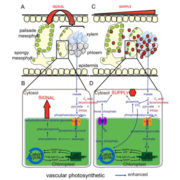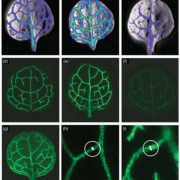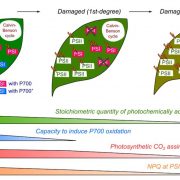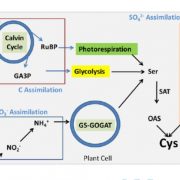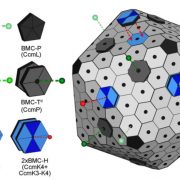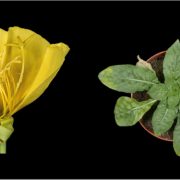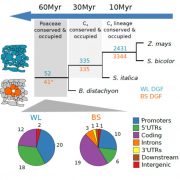Plants increase CO2 uptake by assimilating nitrogen via the photorespiratory pathway
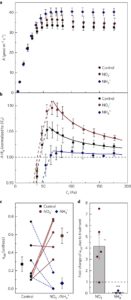 During photosynthesis Rubisco fixes CO2 by carboxylating its substrate RuBP, leading to the de novo production of carbohydrates. Photorespiration has long been considered a wasteful process, initiated by Rubisco-mediated oxygenation of RuBP and resulting in the loss of carbon, nitrogen and energy. Busch et al. demonstrate that photosynthetic carbon metabolism and nitrogen assimilation are intimately linked. Photorespiration can lead to the fixation of carbon into amino acids instead of carbohydrates, when serine and glycine are diverted away from the photorespiratory pathway. This confers substantial benefits under certain conditions, for example by providing an alternative carbon sink when triose phosphate utilization is limited. In addition, when the chloroplast stroma is highly reduced, photosynthetic reductant can be diverted away from the Calvin cycle to the cytosol in order to reduce nitrate and initiate nitrogen assimilation. As such, the Farquhar, von Caemmerer and Berry (FvCB) model, which aims to predict the rate of CO2 assimilation by Rubisco during photosynthesis, has been modified to account for these new observations. (Summary by Mike Page) Nat. Plants 10.1038/s41477-017-0065-x
During photosynthesis Rubisco fixes CO2 by carboxylating its substrate RuBP, leading to the de novo production of carbohydrates. Photorespiration has long been considered a wasteful process, initiated by Rubisco-mediated oxygenation of RuBP and resulting in the loss of carbon, nitrogen and energy. Busch et al. demonstrate that photosynthetic carbon metabolism and nitrogen assimilation are intimately linked. Photorespiration can lead to the fixation of carbon into amino acids instead of carbohydrates, when serine and glycine are diverted away from the photorespiratory pathway. This confers substantial benefits under certain conditions, for example by providing an alternative carbon sink when triose phosphate utilization is limited. In addition, when the chloroplast stroma is highly reduced, photosynthetic reductant can be diverted away from the Calvin cycle to the cytosol in order to reduce nitrate and initiate nitrogen assimilation. As such, the Farquhar, von Caemmerer and Berry (FvCB) model, which aims to predict the rate of CO2 assimilation by Rubisco during photosynthesis, has been modified to account for these new observations. (Summary by Mike Page) Nat. Plants 10.1038/s41477-017-0065-x


